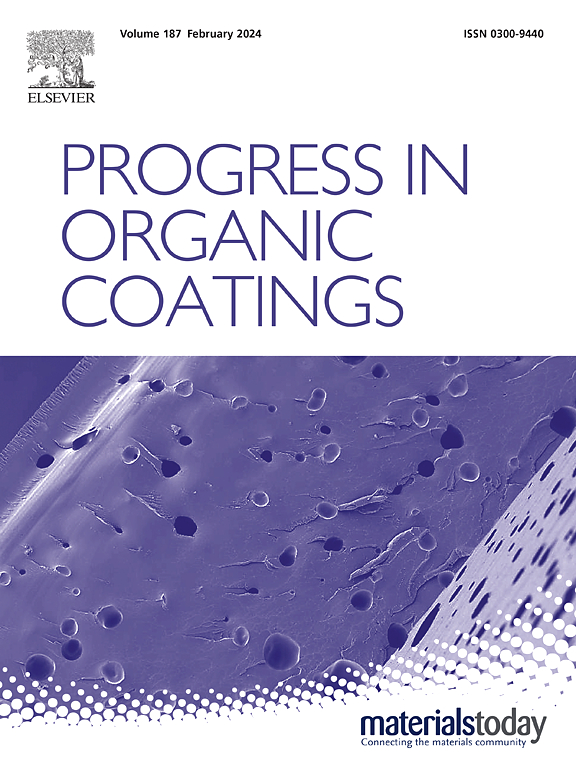Investigation of multiple mechanisms in the development of high-performance sound-insulating waterborne coatings with inorganic and organic fillers
IF 6.5
2区 材料科学
Q1 CHEMISTRY, APPLIED
引用次数: 0
Abstract
This study explores the sound insulation performance of various fillers in waterborne coatings, focusing on calcium carbonate and lighter organic alternatives. The sound insulation performance and mechanism of calcium carbonate were investigated, followed by the preparation of waterborne sound insulation coatings using lighter organic fillers. Two types of organic macromolecules (PVB and rubber granules) and two organic small molecules (AO-70 and AO-80) were selected. The particle size in the sound insulation equation for polymer/solid inorganic particle composites was corrected to predict and adjust the sound insulation of the composites. Impedance tube tests, scanning electron microscopy, and mechanical property analysis were utilized to systematically investigate the sound insulation performance of each filler and the relevant factors affecting STL. Compared to CaCO3, waterborne coatings made with organic fillers demonstrated excellent sound insulation performance. At an addition level of 20 phr, the average sound insulation of PVB and rubber granules increased from 17.47 dB to 21.17 dB and 23.496 dB, respectively. The sound insulation of AO-70 reached 21.972 dB at an addition of 30 phr, while the coating with 20 phr of AO-80 achieved 23.626 dB. The sound insulation mechanism of CaCO3 primarily relies on sound energy reflection, whereas polymer organic fillers offer better compatibility and tighter bonding with the matrix, as well as the unique viscoelasticity of polymer, resulting stronger matrix absorption and filler damping effects. Hindered phenol small molecule filler has excellent dissipation ability for sound wave due to the formation of reversible hydrogen bond and super damping element. Therefore, it shows the best sound insulation performance under the synergy of reflection, absorption and damping mechanisms.
求助全文
约1分钟内获得全文
求助全文
来源期刊

Progress in Organic Coatings
工程技术-材料科学:膜
CiteScore
11.40
自引率
15.20%
发文量
577
审稿时长
48 days
期刊介绍:
The aim of this international journal is to analyse and publicise the progress and current state of knowledge in the field of organic coatings and related materials. The Editors and the Editorial Board members will solicit both review and research papers from academic and industrial scientists who are actively engaged in research and development or, in the case of review papers, have extensive experience in the subject to be reviewed. Unsolicited manuscripts will be accepted if they meet the journal''s requirements. The journal publishes papers dealing with such subjects as:
• Chemical, physical and technological properties of organic coatings and related materials
• Problems and methods of preparation, manufacture and application of these materials
• Performance, testing and analysis.
 求助内容:
求助内容: 应助结果提醒方式:
应助结果提醒方式:


